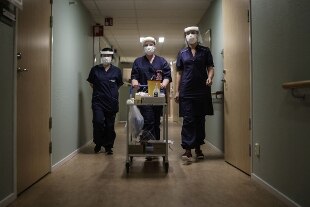Share
November 17, 2021: Sweden will introduce a vaccination pass for indoor events for the first time with over 100 people at certain events, the government has announced.
"We are not isolated. We have to use vaccination certificates," Health Minister Lena Hallengren said at a news conference.
The measure, which if launched, will come into force on December 1st, was strongly recommended by health agencies, which are predicting a peak of infections for mid-December.
So far the country, very reluctant to apply rules and restrictions against Covid, has resisted the fourth wave that has rapidly spread to Europe in recent weeks. Sweden currently has the lowest number of Covid patients admitted to hospital and ICU in the entire European Union, according to Our World in Data, but has been hit hard by previous waves. About 85% of Swedes over the age of 16 received one dose of the vaccine and 82% received two or more doses.
On November 1, the Stockholm government lifted the swab requirement for vaccinated people with Covid symptoms, but decided to review the decision after being targeted by criticism.
According to a study by the Swedish University of Uppsala, the country has been a "net exporter" of covid infections also due to the lax policies of the Stockholm government.
Published in
Eurosurveillance
journal
, the study also benefited from the cooperation of the Norwegian Institute of Public Health and the University of Sydney in Australia.
"Sweden was a net exporter of SARS Cov-2 to our Nordic neighbors in the first year of the pandemic," said John Pettersson of Uppsala University, speaking to Swedish TV Svt.
The government's choice to impose few anti-contagion restrictions and no lockdowns, relying on the common sense of the inhabitants, is being accused.
A policy that has caused many infections in Sweden, but which, according to the study, has also damaged neighboring countries.
The researchers analyzed samples of 71,000 patients, tracing the genetic profile of the viruses and highlighting how there are hundreds of infection chains that started from Sweden and arrived in neighboring countries, in particular in Finland.
"Our results indicate that the Swedish mitigation strategy had an impact on the epidemiological situation internally and across the entire Nordic region," the study points out.

